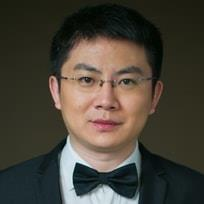Optical Signal Processing: Advances and Perspectives
A special issue of Applied Sciences (ISSN 2076-3417). This special issue belongs to the section "Optics and Lasers".
Deadline for manuscript submissions: closed (30 April 2018) | Viewed by 7207
Special Issue Editors
Interests: structured light; orbital angular momentum; few-mode fibers; multi-mode fibers; multi-core fibers; photonic integration
Special Issues, Collections and Topics in MDPI journals
Interests: microwave photonics; ultra-fast optical communications; photonic digital processing and nonlinear optics
Special Issues, Collections and Topics in MDPI journals
Special Issue Information
Dear Colleagues,
The arrival of the big data era has fueled the increasing demand on both high-speed signal transmission and ultrafast signal processing. Optical signal processing is a promising technique to facilitate ultrafast signal processing in the optical domain, which can avoid cumbersome optical-electrical-optical (OEO) conversion. Optical signal processing brings together various fields of optics and signal processing, e.g., linear and nonlinear optics enable various processing functions in analog and digital signals, with data information encoded in different physical dimensions (amplitude, phase, wavelength/frequency, polarization, and spatial structure) of lightwaves. Recent advances in mechanisms, materials, devices/platforms and techniques have motivated wide optical signal processing applications, such as wavelength conversion, (de)multiplexing, multicasting, logic gate, computing, switching, true time delay, optical buffer, regeneration, etc. Optical signal processing may open up new perspectives to ultrafast signal processing for high-speed optical communications and superior network performance.
This Special Issue aims to explore the recent enabling devices and techniques motivating optical signal processing. It will focus on the state-of-the-art advances and future perspectives of optical signal processing.
Topics of interest include, but are not limited to, the following areas:
- Mechanisms, materials, devices/platforms, techniques for optical signal processing.
- Linear optics and various optical nonlinearities for optical signal processing.
- Semiconductor optical amplifiers, highly nonlinear fiber, periodically poled lithium niobate waveguides, photonic integrated circuits, graphene for optical signal processing.
- Chip-scale optical signal processing on silicon platforms.
- Modulation and detection of multi-level modulation signals in coherent optical communications.
- High-base optical signal processing for multi-level modulation signals.
- Optical signal processing exploiting the spatial structure of lightwaves.
- High-speed electronics assisted advanced digital signal processing (DSP) for optical signal processing.
- Various optical signal processing functions, such as wavelength conversion, (de)multiplexing, multicasting, logic gate, computing, switching, true time delay, optical buffer, regeneration, etc.
Prof. Jian Wang
Prof. Antonella Bogoni
Guest Editors
Manuscript Submission Information
Manuscripts should be submitted online at www.mdpi.com by registering and logging in to this website. Once you are registered, click here to go to the submission form. Manuscripts can be submitted until the deadline. All submissions that pass pre-check are peer-reviewed. Accepted papers will be published continuously in the journal (as soon as accepted) and will be listed together on the special issue website. Research articles, review articles as well as short communications are invited. For planned papers, a title and short abstract (about 100 words) can be sent to the Editorial Office for announcement on this website.
Submitted manuscripts should not have been published previously, nor be under consideration for publication elsewhere (except conference proceedings papers). All manuscripts are thoroughly refereed through a single-blind peer-review process. A guide for authors and other relevant information for submission of manuscripts is available on the Instructions for Authors page. Applied Sciences is an international peer-reviewed open access semimonthly journal published by MDPI.
Please visit the Instructions for Authors page before submitting a manuscript. The Article Processing Charge (APC) for publication in this open access journal is 2400 CHF (Swiss Francs). Submitted papers should be well formatted and use good English. Authors may use MDPI's English editing service prior to publication or during author revisions.






